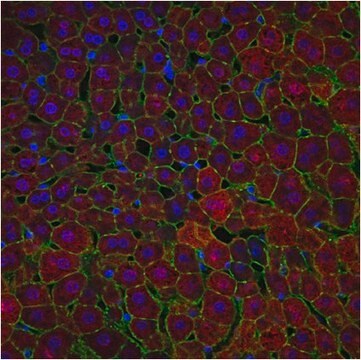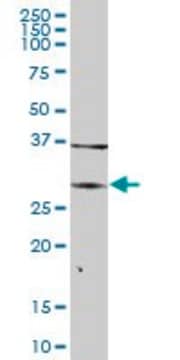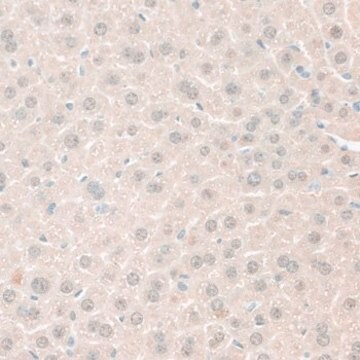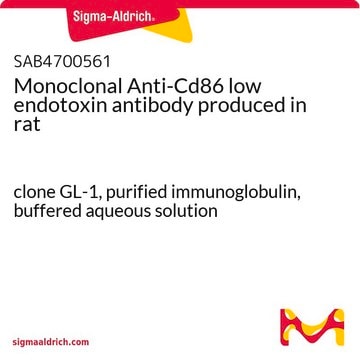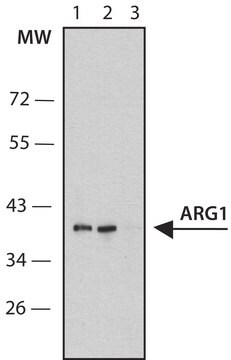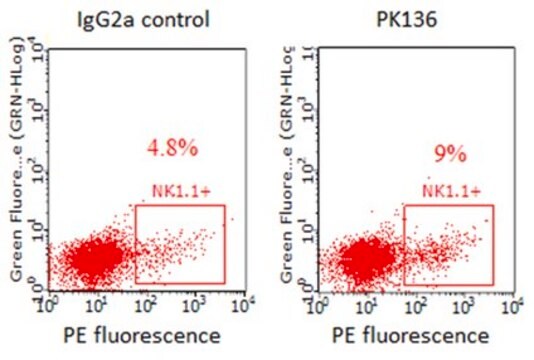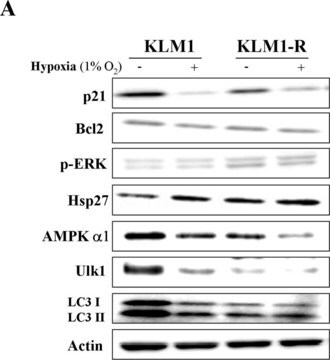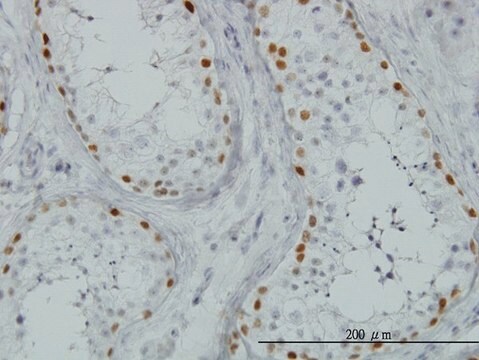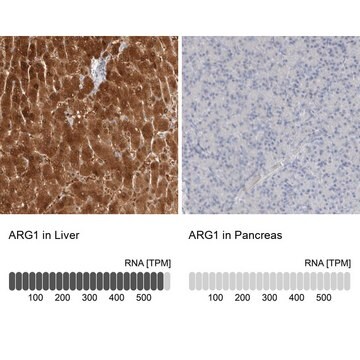AV45673
Anti-ARG1 (AB2) antibody produced in rabbit
IgG fraction of antiserum
Synonym(s):
Anti-Arginase, liver
Sign Into View Organizational & Contract Pricing
Select a Size
All Photos(3)
Select a Size
Change View
About This Item
UNSPSC Code:
12352203
NACRES:
NA.41
Recommended Products
biological source
rabbit
Quality Level
conjugate
unconjugated
antibody form
IgG fraction of antiserum
antibody product type
primary antibodies
clone
polyclonal
form
buffered aqueous solution
mol wt
35 kDa
species reactivity
dog, human
concentration
0.5 mg - 1 mg/mL
General description
Arginase 1 (Arginase, liver) is a liver enzyme that completes the urea cycle in mammals by producing urea, which can be excreted, and L-ornithine through the hydrolysis of L-arginine. Defects in arginase 1 activity lead to a metabolic condition of hyperargininemia.
Specificity
Anti-ARG1 (AB2) antibody reacts with bovine, human, rabbit, pig, canine, mouse, and rat arginase-1 enzymes.
Immunogen
Synthetic peptide directed towards the C terminal region of human ARG1
Application
Anti-ARG1 (AB2) antibody is used to tag arginase 1 proteins for detection and quantitation by Western blotting and in cells and tissues by immunohistochemical (IHC) techniques. It is used as a probe to study the role of arginase-1 in the management of nitrogen balance within mammalian cells.
Biochem/physiol Actions
Arginase catalyzes the hydrolysis of arginine to ornithine and urea. The type I isoform of ARG1, is a cytosolic enzyme and expressed predominantly in the liver as a component of the urea cycle. Inherited deficiency of this enzyme results in argininemia, an autosomal recessive disorder characterized by hyperammonemia.Arginase catalyzes the hydrolysis of arginine to ornithine and urea. At least two isoforms of mammalian arginase exist (types I and II) which differ in their tissue distribution, subcellular localization, immunologic crossreactivity and physiologic function. The type I isoform encoded by this gene, is a cytosolic enzyme and expressed predominantly in the liver as a component of the urea cycle. Inherited deficiency of this enzyme results in argininemia, an autosomal recessive disorder characterized by hyperammonemia.Arginase catalyzes the hydrolysis of arginine to ornithine and urea. At least two isoforms of mammalian arginase exist (types I and II) which differ in their tissue distribution, subcellular localization, immunologic crossreactivity and physiologic function. The type I isoform encoded by this gene, is a cytosolic enzyme and expressed predominantly in the liver as a component of the urea cycle. Inherited deficiency of this enzyme results in argininemia, an autosomal recessive disorder characterized by hyperammonemia.
Sequence
Synthetic peptide located within the following region: LDIMEVNPSLGKTPEEVTRTVNTAVAITLACFGLAREGNHKPIDYLNPPK
Physical form
Purified antibody supplied in 1x PBS buffer with 0.09% (w/v) sodium azide and 2% sucrose.
Disclaimer
Unless otherwise stated in our catalog or other company documentation accompanying the product(s), our products are intended for research use only and are not to be used for any other purpose, which includes but is not limited to, unauthorized commercial uses, in vitro diagnostic uses, ex vivo or in vivo therapeutic uses or any type of consumption or application to humans or animals.
Not finding the right product?
Try our Product Selector Tool.
recommended
Product No.
Description
Pricing
Storage Class
10 - Combustible liquids
wgk_germany
WGK 3
flash_point_f
Not applicable
flash_point_c
Not applicable
Choose from one of the most recent versions:
Certificates of Analysis (COA)
Lot/Batch Number
Don't see the Right Version?
If you require a particular version, you can look up a specific certificate by the Lot or Batch number.
Already Own This Product?
Find documentation for the products that you have recently purchased in the Document Library.
Ewa Zajac et al.
Blood, 122(25), 4054-4067 (2013-11-01)
A proangiogenic function of tissue-infiltrating monocytes/macrophages has long been attributed to their matrix metalloproteinase-9 zymogen (proMMP-9). Herein, we evaluated the capacity of human monocytes, mature M0 macrophages, and M1- and M2-polarized macrophages to induce proMMP-9-mediated angiogenesis. Only M2 macrophages induced
Naohiko Nakamura et al.
BMC cancer, 19(1), 621-621 (2019-06-27)
Noninvasive biomarkers are urgently needed for optimal management of nonalcoholic fatty liver disease (NAFLD) for the prevention of disease progression into nonalcoholic steatohepatitis (NASH) and hepatocellular carcinoma (HCC). In order to identify the biomarkers, we generated the swine hepatocellular carcinoma
Milorad Dragić et al.
ASN neuro, 13, 17590914211044882-17590914211044882 (2021-09-28)
The present study examined the involvement of purinergic signaling components in the rat model of hippocampal degeneration induced by trimethyltin (TMT) intoxication (8 mg/kg, single intraperitoneal injection), which results in behavioral and neurological dysfunction similar to neurodegenerative disorders. We investigated spatial
Katarina Milosevic et al.
International journal of molecular sciences, 23(7) (2022-04-13)
Neuroinflammation and microglial activation, common components of most neurodegenerative diseases, can be imitated in vitro by challenging microglia cells with Lps. We here aimed to evaluate the effects of agmatine pretreatment on Lps-induced oxidative stress in a mouse microglial BV-2
Marija Jakovljevic et al.
Frontiers in neuroscience, 13, 410-410 (2019-05-21)
Purinergic signaling is critically involved in neuroinflammation associated with multiple sclerosis (MS) and its major inflammatory animal model, experimental autoimmune encephalomyelitis (EAE). Herein, we explored the expression of ectonucleoside triphosphate diphosphohydrolase1 (NTPDase1/CD39) in the spinal cord, at the onset (Eo)
Our team of scientists has experience in all areas of research including Life Science, Material Science, Chemical Synthesis, Chromatography, Analytical and many others.
Contact Technical Service